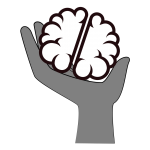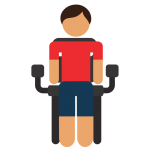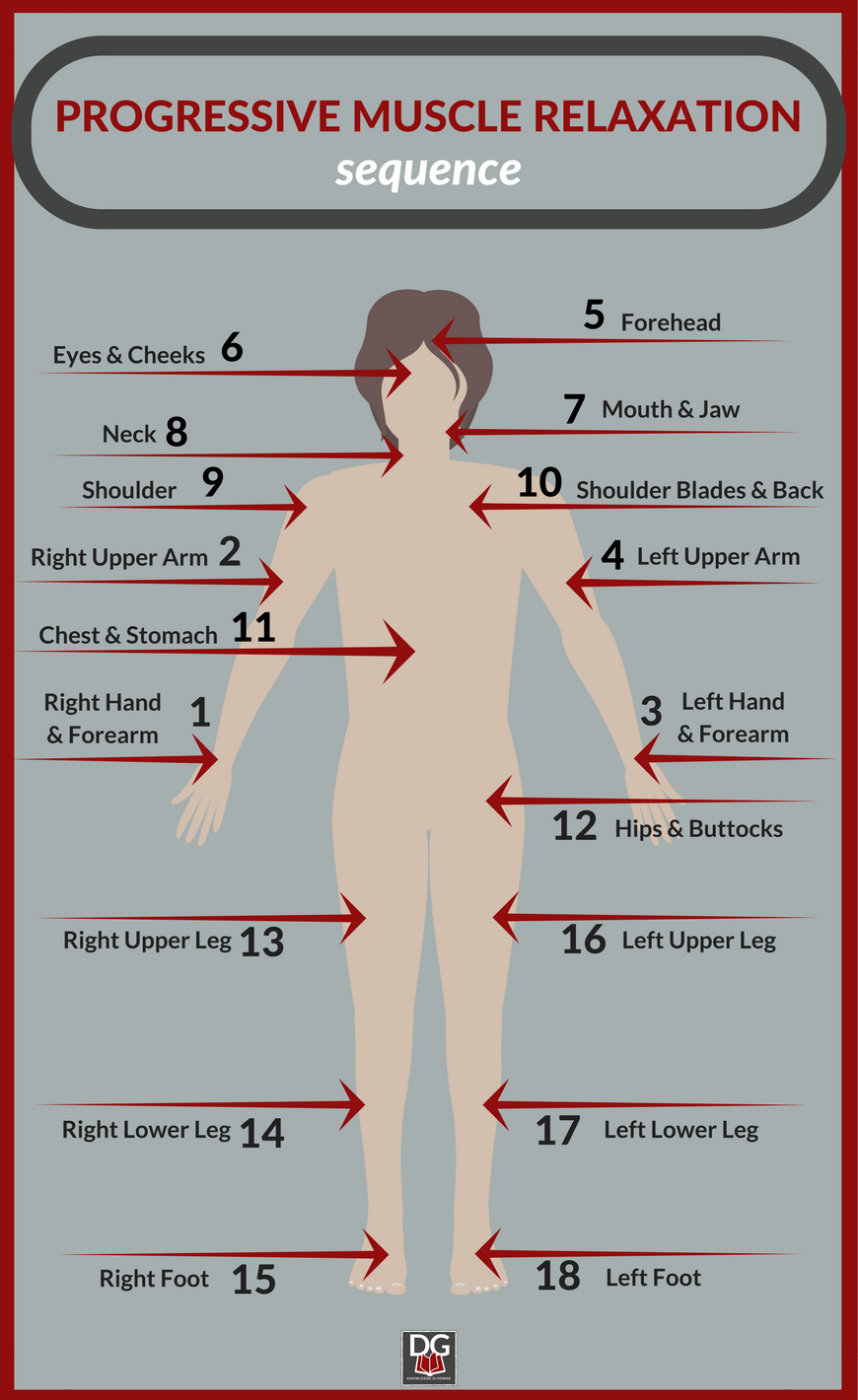
MODULE 7
COPING SKILLS FOR PTSD
Coping with PTSD Takes Work and Dedication
Learning to cope with PTSD is an all-encompassing endeavor. By purchasing this guide, you have already taken the first and most key step towards managing your PTSD symptoms and improving your quality of life. Learning as much about the diagnosis of PTSD is paramount, as information about an issue arms you to better tackle or cope with the problem.
Whether you purchased this guide for yourself or to help a friend or loved one, therapy and proper diagnosis are paramount. A mental health professional that specializes in the treatment of PTSD can provide support and teach effective ways to manage PTSD, the symptoms, and the insurmountable amount of difficulties it brings to a person’s life.
Trying to navigate the murky waters of PTSD healing alone is nearly impossible and less effective. It’s important to have some form of social support. Feelings of guilt, shame, or not wanting to burden others keep many PTSD sufferers from disclosing information about their trauma and symptoms. But people with PTSD do better with social support, so don’t be afraid to lean on others.
Monitoring the intrusive and catastrophic thoughts and feelings associated with PTSD will give you vital information to choose the appropriate coping methods, mechanisms, and skills to use when anxiety ‘kicks in.’ Self-monitoring is an essential step of healing from the disorder.
Changing your lifestyle and following a healthy nutritional diet is paramount to tackling the symptoms.
But one of the most important components of coping with PTSD, especially to live a life without psychotropic medications, is learning and practicing relaxation techniques. Relaxation is a powerful tool in managing the fear and anxiety that comes with a PTSD diagnosis.
Self-Help Tips for Anxiety & PTSD
Tip 1: Facts About Anxiety & PTSD
Regardless of which specific anxiety related problem you are dealing with in your life, educating yourself on how anxiety affects your PTSD will give you an upper-hand in the struggle to control the symptoms. We often fear and reject what we don’t know or understand, and mental health is no exception. Educating yourself about issues that affect your life puts you at an advantage, especially if you’re working on getting your life back on track.
Anxiety is a normal adaptive system in our body and minds that lets us know when we are in danger. It is necessary for our survival. For this reason, you cannot look at anxiety as something you need to eliminate, but rather as something you need to manage. Learn ways to reduce and better control your anxiety.
Anxiety can be problematic when it alerts you of danger, even though there is no real danger. To learn how to manage this, you must first understand that all of your fears and physical manifestations have a name: anxiety. Say it, repeat it, and convince yourself that this is something you can fix.
NOTE: PTSD generally includes intense symptoms such as flashbacks, nightmares,and even dissociative episodes which can become overwhelming for many. Educating yourself about all these feelings and sensations will help you understand that you are not going crazy. Knowledge has the power of helping you understand that the problem is caused by a traumatic event you have experienced. The good news is that there are a variety of skills you can learn to help you cope with this anxiety.
Tip 2: Anxiety & PTSD: Action Plan
PLAN A
Calm Your Anxiety By Relaxing The Muscles In Your Body. PTSD
and its army of symptoms can make us very tense and jittery throughout
the day. Learning to relax your body can be an invaluable tool.
SEE PMR INSTRUCTIONS BELOW
PLAN B
Learning To Calm Anxiety By Slowing Down Your Breathing. As a PTSD sufferer, you are probably familiar with anxiety and how it can disrupt your day. Calm breathing is an incredibly valuable tool to quiet your anxiety down and regain control of your day.
SEE CALM BREATHING INSTRUCTIONS BELOW
NOTE: If you experience flashbacks or dissociation, keeping your eyes open during calm breathing might be a good idea. Think of it as a visual grounding.
PLAN C
Grounding Techniques. Grounding is an invaluable tool to help you reclaim your present when a flashback or dissociative episode attempts to make you lose touch with reality. This can be a scary situation for your, as well as for your loved ones or others around who don’t have knowledge of PTSD. anxiety and how it can disrupt your day. Calm breathing is an incredibly valuable tool to quiet your anxiety down and regain control of your day.
Having the ability to come back to the present moment can be an extremely helpful technique. Grounding attempts to connect you with the present physically, while your mind is wandering in the past by redirecting your attention, your senses, to present things that can serve as positive stimuli.
PLAN D
Getting Your Life Back. If PTSD is truly affecting your life, and you’re not yet in control, then you probably have stopped doing things that you used to love and enjoy. You have avoided family and friends, and instead, isolated yourself. While understandable after trauma, it doesn't help you move forward. You must embrace life and re-immerse yourself in activities you know you enjoy. It might be difficult, but you need to make an effort to get back into as normal of a routine as you possibly can.
Get back to work, restart hobbies or sports, and socialize with friends and family. Whatever you decide to do, make sure you’re surrounding yourself with a non-judgmental solid support system.
Getting your life back means that you have to also take care of yourself. Often, PTSD sufferers are too sidetracked by the symptoms that they fail to pay attention to crucial components like their sleep, exercise, and even watching what they eat. A bad diet, lack of sleep, and no exercise can make your anxiety worse, as your body has to divide its attention between helping you manage your anxiety and balance your bad habits.
PLAN E
For example, if your traumatic event happened due to a car accident, you might avoid things related to driving. If your traumatic event happened at night while you were out with friends, you might find yourself shunning away from night activities. If your traumatic event is related to flying, you might refuse to get on a plane and chose driving everywhere instead. If your traumatic event was brought on by a family member, then you will probably want to avoid family gatherings.
By the same token, you may find yourself avoiding other things and places that could remind you of the trauma. Perhaps you stopped walking through the park, avoid crowded places, or refuse to watch certain movies, TV shows, or even conversations. But avoiding trauma related events, places, people, conversations, or situations will not help you move forward in your healing from PTSD. You must face your fears to conquer them. Avoiding them won’t arm you with tools you need to move forward and reclaim your life.
NOTE. If you find it difficult to face any of the impediments that your anxiety places on you, start to gradually re-immerse yourself in activities. A measured approach to facing your fears might be the best solution. Perhaps you can go eat an ice-cream with a friend, walk around the block where you live, or maybe go to a nearby park.
While you don’t have to force yourself into difficult situations or activities, it’s important that you push yourself a little. All you need is that first step forward to gain momentum and start reclaiming your life.
Tip 3: Deal with Your Guilt & Shame
Guilt and shame are common ailments for PTSD sufferers. While they are often thought to be interchangeable concepts, they are not the same. Guilt is a feeling, shame is an emotion. Feelings are mental sketches of what is going in our bodies, while emotions are responses that happen in your brain and which create reactions in your body, altering your physical state. More importantly, they affect your PTSD a different way. Guilt is about one’s actions, while shame relates to one’s self-worth and ethics.
As a PTSD sufferer, it is vital that you understand the role that guilt and shame play in your life. Guilt and shame are common among PTSD trauma survivors, they can affect overall symptom severity, and if unmanaged, both guilt and shame can greatly interfere with your PTSD recovery.
Guilt is weaved directly with the feeling of shame. Guilt is an underlying component of shame, and must be dealt with first. Understanding that you need to shift your feelings of guilt away from you is paramount in resolving guilt, and reducing the vicious cycle that most PTSD sufferers fall into. In other words, addressing the core issue will remove negative emotions and stop feeding your PTSD with symptoms that keep you suffering.
Feelings that create anger and increase your chances of feeling shame are those such as helplessness, hurt, and failure. Although it is typical for people with PTSD to have feelings of guilt regarding the events they experienced, understanding that none of it is your fault and that you could not predict the future or the trauma will help you shift your self-perspective.
Tip 4: Praise the WARRIOR
Taking control of your PTSD symptoms and learning to manage your anxiety will take time, work, and lots of effort. But there is a beast in you, and the results are rewarding. You will notice improvements, little things that before were so difficult, and now they take less effort. Places that once were negative stimuli are now pleasurable. So, give yourself all the credit, because you deserve it. Battling PTSD is no easy task, and if you are here and have gotten this far is because you have learned to make yourself a priority.
If you have taken the time to make lists, change your lifestyle habits, and make time for yourself to relax, then you have all the tool to follow your progress. If you take the concept of retraining your brain seriously, and you create a habit of practicing everything in the materials I provide, plus any tools your therapist suggested, then you will absolutely see progress and positive changes in your life.
Recording or documenting your progress will help you make plans for the next day, the next week, or even the following month. The most important thing to remember is to always practice. From breathing to relaxation techniques, from outdoor to couch time, from work to family, you have managed to set realistic goals for your progress and you deserve to be rewarded for it. Your decision to take control of the symptoms will change your life.
NOTE: The PTSD self-help tips provided here are designed to grow with your progress. The recommendations in this and other materials are meant for you to practice to the point they become regular habits and form part of your daily routine: every day, all the time, wherever you go, whenever you can. Think of mastering your PTSD symptoms as your new religion.
All the information here is put together to teach you effective ways to manage your PTSD stress and help reduce your anxiety, but you have to practice for them to be effective.
CAM (Complimentary & Alternative Medicine)
Complementary & Alternative Medicine (CAM)
Complementary and Alternative Medicine (CAM) options and interventions that include approaches such as relaxation, mindfulness, yoga, acupuncture, and others. They are invaluable tools in the treatment of PTSD and should be integrated as supportive treatments.
CAM treatments help your PTSD brain by regulating your autonomic nervous system (ANS) [sympathetic and parasympathetic nervous system]. During a stressful event, the ANS responds by rallying you into the fight-or-flight response. If the stressful situation is not resolved, or is life-threatening, your mind resorts to evolutionary survival mechanisms to help keep you safe. In people with PTSD, these mechanisms are faulty due to exposure to trauma.
CAM approaches help to reclaim balance in your body and mind by providing alternative ways to calm down when anxiety arises. Although some situations can elicit major anxiety, CAM approaches have allowed many PTSD sufferers to take full control of their symptoms without the need for any biological medicines. Give them a good try, the next lesson helps you understand how each CAM approach works.
Diaphragmatic (Calm) Breathing
About Diaphragmatic (Calm) Breathing
Calm breathing is a technique that can help slow down a person's breathing during moments of stress and anxiety.
When we encounter anxiety, our breathing changes. When we feel anxious, we take shorter, quicker, shallower breaths, which can lead to hyperventilation. In a sense, we are over breathing.
Not having techniques to manage your breathing can increase your anxiety. It is a good idea to have a plan of action when you find yourself over breathing, to avoid dizziness, headaches, and a racing heart.
Learning diaphragmatic breathing is a portable technique you have available no matter where you need it. Calm breathing can be used at any moment you feel anxious. But to achieve this, you must practice.
How Diaphragmatic (Calm) Breathing Helps
Helps strengthen your diaphragm.
Decreases your body's oxygen demand.
Reduces breathing work by slowing down breathing rate.
Uses less energy & effort when breathing.
Helpful Diaphragmatic (Calm) Breathing Tips
Sit comfortably on a chair of couch with your knees bent (90 degree angle), and your neck, head, and shoulders relaxed.
To feel your diaphragm move as you breathe, place your dominant hand on your upper chest. Place your other hand just below your rib cage.
Slowly, breathe in through your nose feeling your stomach move out towards your hand. Don't move the hand on your upper chest.
As you exhale through your mouth, tighten your stomach muscles inward. Your upper chest hand should still be motionless.
How to Do Diaphragmatic (Calm) Breathing
1. Take a slow, smooth, regular breath in through your nose, breathing into your lower abdomen (about 4 seconds).
2. Hold your breath for about 1 or 2 seconds.
3. Exhale slowly through your mouth, taking about 4 seconds to fully release the air.
4. Wait 3-5 seconds before taking another breath and starting the cycle again.
You will find your own comfortable breathing pattern and rhythm. However, to decrease anxiety 6-8 breathing cycles per minute are recommended.
These breathing cycles help regulate the amount of oxygen you're in-taking, which will eliminate the chance of your experiencing tingling or fainting sensations generally associated with over-breathing.
At first you will get tired. It will take some time for you to learn how to use your diaphragm for breathing. As you practice it will become easier. You can increase effort by placing a book on your abdomen.
What to keep in mind...
Be sure to pause for a few seconds between breaths to ensure sure you don't hyperventilate while you practice.
To achieve diaphragmatic breathing, your shoulders and chest area must be relaxed. This will take some practice to accomplish. You might want to start your calm breathing laying on the ground to feel the hand on your abdomen rise as you fill your lungs with air.
How often should you practice?
To start, practice diaphragmatic breathing for 5-10 minutes, 3 to 4 times per day, and gradually increase the amount of time you spend doing the exercise.
Mindfulness
About Mindfulness
Mindfulness is the basic human ability to be fully present in the
moment, aware of what you're doing and what's going on, without being
overly reactive or overwhelmed by the surrounding environment. It is a
natural ability we all possess, and those with PTSD should undoubtedly
learn to master this skill.
As a PTSD sufferer, there is no substitute for having the ability to bring awareness to what you are experiencing at the present moment without losing control of your thoughts and emotions.
While mindfulness can be challenging for people with PTSD who are
affected by a plethora of negative thoughts and emotions, practicing and
mastering this skill will turn into one of the most powerful weapons
you can use to heal from your PTSD and control the symptoms associated
with this debilitating disorder.
Mindfulness requires that you bring conscious awareness to what you’re experiencing at the moment using your senses, state of mind, thoughts, and/or emotions.
As a PTSD sufferer, being aware of your thoughts and emotions will help you retrain your brain and control the negative impact that PTSD symptoms have on your life.
Mindfulness is the skill that will help you put space between your PTSD brain and your reactions, by teaching your how to be fully aware of your thoughts and emotions which will help you have controlled responses to inside and outside stressors.
Basics of Mindfulness

UNDERSTAND that there is no “right” way to practice mindfulness, as the experience is different for everyone. You don’t need to buy anything to start practicing mindfulness. Some people choose to do it with incense, candles, and use floor mats, others are happy with just a chair. Nothing other than a quiet place and time are necessary to access and master the skill of mindfulness, but feel free to use and experiment with options that best suit your needs and allow you to get the most out of your mindfulness exercises.

Set aside some TIME to practice mindfulness every single day. In the beginning, anywhere from 5 - 10 minutes can prove helpful, but working up to 10 - 20 minutes per day is ideal. As a beginner, do not stress about particular time goals or get too hung up on specific things to address during your mindfulness practice.

Find a PLACE where you will have little to no distractions. It can be anywhere inside or outside your home, or at another location that has natural light and where you feel at ease and can sit comfortably. You can choose to sit on a chair, a cushion, or a park bench, just make sure the location gives you a stable and solid seat, not one where you are slouched forward or hanging back. You can sit down with both feet touching the floor or your legs crossed. Your upper body should be straight but not stiffened, allowing for the natural curvature of your spine to be in a relaxed mode. This will ensure that your head and shoulders are comfortably resting on top of your vertebrae. Place your upper arms as parallel to your upper body as much as possible. Your hands should rest on top of your legs, with your upper arms at your sides. Placing your arms too far forward will make you perch, and too far back will make you stiff. Try different options and see which ones works best for you.

Your EYES can be open or closed, it is a personal preference. Most people with PTSD prefer to leave their eyes open when practicing mindfulness, letting what appears before them be there without focusing on it. Drop your chin a little and let your gaze follow a natural course downward. You can think of this as looking at the floor or a focal point a few feet away. There is no right way to do this step, other than what feels more comfortable to you.

Find your FOCUS. Whether you want to focus on your current thoughts or your emotions, or you want to start by focusing on your breathing, bring your attention to your breath or the sensation in your body by simply observing them. Do not get caught up on any specifics, but simply take a light and gentle mental note of them, and then let them pass, and go to the next. Pay close attention to your body and don’t allow your mind to go astray with any thoughts or emotions that could affect your goal or destination for this mindfulness exercise. When you find your mind wandering (and it will), simply, softly, and gently bring it back to the breath.
Make it a HABIT, and repeatedly practice mindfulness on a daily basis. Remember that there is no way you can get this wrong, and more practice will help you become more mindful, which will get you closer to the goal of self-control over thoughts and emotions. Don’t get worked up if at first you find your thoughts drifting frequently. Mindfulness is not about controlling the drift of your thoughts, but to catch yourself when your PTSD brain wanders and quickly bring it (and your thoughts and emotions) back to attention and focus.
The Importance of Mindfulness for PTSD
As a PTSD sufferer, practicing and mastering mindfulness will allow you
to create space for yourself, not allowing the outside world to
negatively affect you. Mindfulness requires you to be aware and present,
giving you the opportunity to assess what you are experiencing at the
moment, and at the same time allowing you to stay in tune with your
thoughts and emotions. It is one of the mechanisms that allows you to
learn, have, and practice controlled responses to stimuli. Being fully
present in the moment and in control of your thoughts and emotions can
help you achieve many personal and professional goals, like beating
PTSD, but can also help you become a better parent.
Develop your own primary tools of observation, such as concentration and mindfulness. They will prevent you from making quick judgments based on preconceived ideas related to trauma.
Overcome wounds from the past by confronting them with strength and courage through mindfulness.
Enhance your spiritual awareness of yourself by making mindfulness a regular practice.
Become aware of the pain and suffering that unmindful thoughts, feelings, emotions, words, and actions can have on your life.
Eliminate anything that agitates your mind and prevents you from achieving inner peace and life serenity.
Remain vigilant during practice so that you can monitor your progress. Don’t let your mind wander off.
PMR (Progressive Muscle Relaxation)
About PMR
Tension is the body's psychological response to anxiety provoking
thoughts and emotions. Progressive Muscle Relaxation (PMR) is a
non-medicine method of deep muscle relaxation that can help you reduce
anxiety.
Muscle tension is our body’s reaction to fear and anxiety. It is a natural process that helps our bodies prepare for potentially dangerous situations. People who suffer from anxiety are often tense throughout the day, never achieving the feeling of what being relaxed is all about.
But PTSD sufferers always perceive their surroundings as hazardous, even though many situations many not actually be dangerous. For us, most conditions are fear and anxiety based, eliciting a tense reaction from our bodies. Most of the time we don’t even notice the tension in our muscles. It could be the clenching of your jaw, a stiff back, or even teeth grinding, but some form of tension is always present. Muscle tension can lead to muscle aches and pains, and it is truly exhausting.
Progressive Muscle Relaxation (PMR) is an easy to follow two-step method that helps reduce tension. PMR can be helpful in cases where anxiety is directly related to muscle tension, and it is a particularly effective technique for PTSD sufferers because it first brings awareness of which muscles are tense, and then helps us differentiate between a tense and a completely relaxed muscle.
Helpful PMR Tips

- You will need 15 minutes and a quiet place to complete exercise.
- Practice PMR at least twice a day for the first two weeks. The more you practice, the quicker your relaxation responses will kick in when you need them.
- Practice PMR every day even if you are not feeling anxious. Practicing when you are calm will make it easier to implement when you are anxious.
SURROUNDINGS:Minimize anything that can distract your five senses. No TV, no touching items, no radio, no chewing gum, and take your shoes off...
COMFORT:I recommend using a chair where your body and head are comfortable.
PHYSICAL INJURIES:If you have injuries or history of muscle pain problems, consult with your doctor before starting.
YOUR BODY:Avoid doing PMR after a heavy meal, or after consuming drugs or alcohol.
PMR Steps
STEP 1: Tension: In this step you will apply muscle tension to a specific part of your body. This step will be the same for all muscle groups.
STEP 2: Relaxation: In this step you will relax the muscles tensed on Step 1.
PMR General Guidelines
1. Once you find a comfortable place and have set aside the time for
relaxation, start by slowing down your breathing. Think of it as a way
of giving your system permission to relax.
2. After you've slowed down your breathing, start the PMR sequence (below) in the order described. Tense the muscle group, feel the tension, but don't overdo it to the point of feeling pain. Keep that muscle group tensed for at least 5 seconds. Be sure to pay attention in case you're cramping up.
3. After 5 seconds or so, relax the muscle group and keep it relaxed for approximately 10 seconds before you move on to the next step in the PMR sequence. You can talk your sequence through. For example, you can say "tense" and "relax" to guide yourself through it.
4. Once you are done with the relaxation sequence, stay sitting in your comfortable spot for a few additional moments to allow yourself to become fully alert.
PMR Sequence
PMR can be practiced at any time. I recommend doing it at least twice a day, especially when you are NOT feeling anxious.

PMR (Progressive Muscle Relaxation)
About Visualization
Visualization is the act of imagining or picturing yourself in a peaceful and safe place, an environment that makes you feel happy, relaxed, and protected.
While visualization is not a cure for anxiety, it is a relaxation strategy that serves as a powerful tool for you to cope with anxiety symptoms, especially during periods of high stress. Visualization is one of the best methods for PTSD sufferers to reduce anxiety, get a break from the daily stress caused by the symptoms, and start taking control of their lives.
Keep in mind that visualization is not as simple as just imagining yourself somewhere else and immediately feeling better. There are several components that have to be present to make it work successfully, and committing to practicing this technique every single day is the only way to achieve results faster.
Keys to Visualization
Practice Makes Perfect!
When you first start practicing visualization, you have to actively think about an imaginary place that is not part of your current present state. Because this is not natural, it could affect your ability to properly visualize. However, if you practice visualization every single day, if you commit to that level of dedication it will become second nature, be a successful coping skill, and it will help you manage the stress associated with PTSD symptoms.
Use All Your Senses.
Visualization is a lot more than imagining what a place looks like. In order to achieve proper visualization for relaxation purposes, you have to fully perceive your “happy place.” What does it smell like? What colors or specific visual attributes can you take note of? What sounds can be heard? Proper visualization requires that you use all of your senses to effectively feel, smell, hear, see, and even taste the air around your happy place. Visualizing your safe place with all your sense will allow you to create a ‘real mental place’ you can access when necessary.
Ready For Action.
Visualization can be action packed for people with PTSD, as coexisting symptoms can occasionally bring stressful thoughts during visualization exercises. It is important to remember that you have the power to get rid of these bad thoughts and effectively “go through” your visualization.
How to do Visualization
STEP 1: Tension: Choose a Happy & Safe Place
Finding your happy place is the first and most important step when starting visualization. Whatever place you choose, make sure it is not associated with any stressors, or anywhere where you previously had a bad experience. For PTSD sufferers, I always recommend a place that is visually attractive, very clean, and immediately relaxing to your senses.
STEP 2: Find a Spot to Practice
You should already have your perfect and safe place in mind, now you need to think of a comfortable and quiet location to practice your visualization exercises. Although visualization can be performed just about anywhere, I recommend PTSD sufferers to choose a location where they can be sitting comfortably, quietly, safely, and without outside distractions. If your PTSD symptoms are too far out of control, or you have physical pain, perhaps you can ask someone you trust and who knows about your condition to be present the first few times.
If appropriate to the surrounding location, you could loosen your clothes and belt a little, or simply chose to do visualization with clothes that are not too constricting, like sweatpants and a t-shirt. The important thing to remember is that you need to be physically relaxed for visualization to be effective, and for your mind to associate the location with the visualization technique. This will ultimately increase your success.
Step 3: Immerse Yourself
Close your eyes and picture yourself in your safe and happy place. Aloud or quietly, tell yourself where you are, describe the place. What is around you? What is to your left, to your right? What do you see in front of you? What is it about this place that makes it so relaxing for you? Can you hear anything, what is it? Are there several sounds? Can you smell anything? What is it, can you describe the smell? Are there any objects around you can touch? Try to immerse yourself in your chosen location. Think of every single detail you might need to describe to the place to someone who is blind.
Most people who practice visualization find that thinking about all these things makes it more difficult to relax. This is particularly important for people who suffer from PTSD to remember, as certain smells, sounds, sights, etc. can elicit negative thoughts. This is why it is paramount for you to take the time to choose a safe and happy place and also to practice visualization as much as possible.
Step 4: Relax Your Body
Notice the state of your body. Make a conscious effort to feel relaxed. Notice your anxiety level. Notice your muscles. Are they tensed up? If so, try to relax them. Are there any stressful thoughts lingering in your mind? If so, imagine what it would feel like if you got rid of those thoughts.
Even if you are not feeling fully (or at all) relaxed, try to visualize what it feels like to be relaxed. Try to feel your heartbeat, feel your muscles again, imagine how your mind will feel if you were fully relaxed. This thought process is important because even if you are not relaxed at that moment, thinking about it will eventually lead you to start learning how to feel relaxed.
Focus on all the sensory elements present in your scenery, and spend some time making the experience more vivid in your mind. If your happy place is a beach, imagine the warm sun on your skin, smell the ocean, listen to the waves crashing on the shore, the wind, the seagulls. If your safe place is a bench on a park, imagine the sound of the trees rustling, listen to the birds singing, perhaps children laughter nearby, smell the freshness of the day.
Regardless of the location of your scene, make a conscious effort and take a good amount of time to absorb the surrounding imagery. The more details you are able to invoke to your senses, the more vivid the entire experience will become, and the more relaxation and anxiety reducing effects you will accomplish.
Step 5:Remove Any Stressors
Start your visualization journey by understanding that this technique is not going to remove all the stress in your life. Regardless of how good you get at it, you will sometimes have some nagging thoughts in the back of your mind, and these will try to enter your safe and happy relaxation space. When this happens, you can resort to something that might at first seem childish, but works like a charm: you are going to mentally transform the stressful or anxiety provoking thought into an object you can squeeze, throw, get rid of, or otherwise permanently remove. For example, if your safe place is a beach, then converting your thought into a rock you can throw into the ocean might help. If your safe and happy place is a bench on a park, then perhaps you can turn your bad thought into a leaf or a tree branch, something that can be carried away by the wind. If you feel safer in the mountains, then convert your negative thought into a small rock that can be washed away by a river. If none of these options work for you, then imagine turning your bad thought into a tiny little pebble that a dove can fly in, pick up, and take away forever.
If you use this imaginary object switch technique when a bad thought comes to you during visualization exercises, you will slowly start reducing the size and impact of the negative thought in your life. The beauty and power of visualization is that you can imagine anything you want, provided the imagery continues to contribute to that feeling of relaxation, and you continue to turn bad thoughts into objects that can be fully and permanently removed from your mind.
At first, visualization is not going to work magic, and is not going to eliminate all your anxiety or get rid of all your bad and intrusive thoughts. The key is to remember that it will become more effective the longer you do it. Eventually, you will stop imagining what it feels like to be relaxed or what it would be like to have all your stress gone, and you will be able to genuinely feel relaxed in your safe and happy place.
Step 6:Practice Makes Perfect
Indefinite is the word I want you to remember here. As a PTSD sufferer, it is imperative that you make a commitment to your healing and continue to practice visualization exercises for a long time. If at the start you commit to doing it every single day for at least one or two months, you will see results because visualization will become second nature to you. If after a couple of months you are still constantly thinking about what is it that you are supposed to do for it work, then it is not working, and you need to rethink your strategy, or even your chosen safe and happy place. Visualization works if you do it properly, and it has life changing effects for people battling PTSD symptoms.
PMR General Guidelines
1. Once you find a comfortable place and have set aside the time for
relaxation, start by slowing down your breathing. Think of it as a way
of giving your system permission to relax.
2. After you've slowed down your breathing, start the PMR sequence (below) in the order described. Tense the muscle group, feel the tension, but don't overdo it to the point of feeling pain. Keep that muscle group tensed for at least 5 seconds. Be sure to pay attention in case you're cramping up.
3. After 5 seconds or so, relax the muscle group and keep it relaxed for approximately 10 seconds before you move on to the next step in the PMR sequence. You can talk your sequence through. For example, you can say "tense" and "relax" to guide yourself through it.
4. Once you are done with the relaxation sequence, stay sitting in your comfortable spot for a few additional moments to allow yourself to become fully alert.
PMR Sequence
PMR can be practiced at any time. I recommend doing it at least twice a day, especially when you are NOT feeling anxious.
